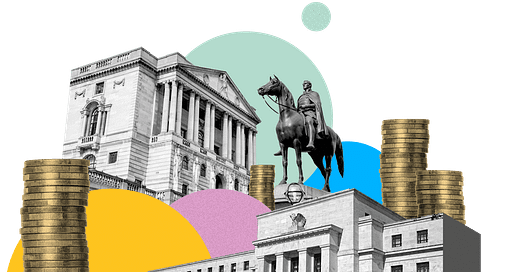It was really a bloody day yesterday with a meltdown in all markets. As mentioned in the previous report, it was caused by the ECB announcement on last Thursday and the US inflation report on Friday.
These announcements and yesterday’s price action have forced the economists at Goldman, JP Morgan, and Barclays to revise their forecasts for the US rates to be increased by 75 basis points after the Fed meeting tomorrow. I believe that will not be the case. The Fed will raise rates only by 50 basis points.
My argument is that the Fed really wants to avoid as much as possible raising rates aggressively to control inflation but bring inflation down through other methods that they have never done before. In all my 45-odd years in the markets, I have never seen a period where the Fed has actively tried to control demand, create unemployment, stop wages from rising, and navigate the stock markets down. While they are doing all this, they also know that they are walking on eggshells. Their intention is not to crash the markets. The markets are already in the theoretical sense of bear market territory. A 75 basis point hike from the Fed will pass a message to the markets that they are panicking and I think they will want to avoid that. What the Fed is very good at doing is they deny reality and the obvious and when they are proved wrong they become firefighters.
There is a reason for that. Whenever they have tried to be proactive, the markets have reacted violently and they have been forced to withdraw their action.
The actions of last week have clearly conveyed to the markets that the liquidity flow that existed from two of the major economic blocs for the past 14 years has ended for the time being. They are moving away from an easing and pumping of liquidity to a tightening and extracting liquidity.
So far I’ve had 100% success on our Fed action calls. So by the law of averages, I could be wrong this time but I strongly believe it will be only 50 basis points.
As we all know three major central banks matter in terms of global liquidity. The Fed, the ECB, and BOJ. In the 80s and 90s, the inflation outlook for these three major economies differed drastically creating major movements in foreign exchange. Those were the decades in which foreign exchange was one of the best trading asset classes. Later with globalization and inflation becoming synchronized foreign exchange became less volatile and boring. Now it may be turning to be more volatile and interesting again.
There were extreme movements in equities, cryptos, and bond markets yesterday. The US ten-year yield spiked almost 30 basis points creating a huge one-day move. The biggest move since Mar 2020 but the most troubling move was in the 10-year JGB markets.
While the US and Europe are in sync on their monetary and Quantitative policy, Japan is still in full quantitative easing mode. Not only are they buying JGBs under their ‘yield curve control’ program, but they are also managing it actively.
They are targeting a 0% rate with 25 basis points on either side. But yesterday it broke through the top limit. This created the feeling that the BOJ may be losing the battle fighting the speculators or perhaps they are considering of widening the band to 50 bps on either side. However, by the end of the day, the yield came back within its limit.
For that matter, BOJ is the business of unlimited QE. To defend the top limit of their yield target they become unlimited buyers of JGBs. They have a clear policy to buy as much as they deem fit. And in Japan, they can buy real estate, corporate bonds, stocks, and even foreign assets.
When such distortions and volatility can become an existential threat to the major economies never underestimate their ability to coordinate and take action. At all times so far we have seen that happen. Otherwise, we wouldn’t be here the way we are with the markets.
A complete change to the present working of the markets or a reset may be on the cards but that may be some time away. As for now, inflationary fears will play games with the markets, and always be mindful of some concerted central bank intervention. Meanwhile, foreign exchange and bond markets will also remain very volatile.
If you received value from this post, and you’d like to send some back, or if you’d like to signal to me to continue spending time on these types of explorations, feel free to buy me coffees (thank you!):
So, there we go. Thanks for reading Breezy Briefings. If you enjoyed this, I'd really appreciate it if you could take a second and tell a friend. Honestly. It makes such a big difference.
Forward this email. Recommend the newsletter. Share on Twitter, WhatsApp, Telegram, LinkedIn, Slack, wherever!
Join Breezy Briefings’ Official Telegram Channel: https://t.me/BreezyBriefings
Abraham George is a seasoned investment manager with more than 40 years of experience in trading & investment and multi-billion dollar portfolio management spanning diverse environments like banks (HSBC, ADCB), sovereign wealth fund (ADIA), a royal family office and a hedge fund. Currently, he is a co-founder of a new hedge fund where foreign citizens can invest in Indian growth stocks like Tanla operating in hyper-growth markets like CPaaS.



